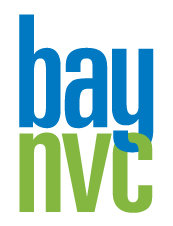by Miki Kashtan
At the last Tikkun gathering that I attended back in February one of the speakers talked about how Jews and Christians are united in their discomfort about the fact that Jesus was Jewish. So I laughed with everyone else, and have shared this insight with many others since, and still see that I personally love it that he was Jewish, because I feel a sense of connection with him that is rendered more meaningful this way. Which almost begs the question: how would a Jewish woman born and raised in Israel develop a sense of connection with Jesus?
Loving No Matter What
The year was 1991. I was having a fight with a friend during and after a back-packing trip. We were lying on my bed, facing each other, talking, and trying to get to the bottom of what was going on. We weren’t getting very far, though we were getting friendlier than before. Then my friend expressed an entirely new piece I hadn’t heard before: she was upset with me for not protecting myself at all. It drove her crazy, she said, that all through the trip I continued to reach out to her, extended my love and friendship, and tried to connect. I was distraught, to the core. I started crying, I just couldn’t contain my helplessness. I couldn’t fathom how someone could be upset with me for loving, for reaching out. In my agony I cried out that I didn’t want to learn to protect myself. I knew even then, before discovering Nonviolent Communication, that I didn’t want to learn to protect myself. And right there, in the midst of crying, I suddenly sat up, agitated and excited. I understood, intuitively, from the inside out, from within the despair, what Jesus was trying to do: he was trying to love no matter what. I felt an enormous sense of kinship with him. Not because I was anywhere near where I sensed he got to. That didn’t matter. I was on the same path, and I was not the only one. In that moment, without knowing hardly anything about him, I found peace and inspiration in this way of understanding his life.
The Revolutionary Defiance of Turning the Left Cheek
My second interface with Jesus came years later, when I read Walter Wink’s The Powers That Be. Page by page Jesus was being transformed back into what I believe he was: a revolutionary Jew claiming the power of love to transform the world he lived in, and willing to risk everything for truth. I understood the courageous wisdom provided in the Sermon on the Mount, where turning the other cheek thrusts one’s full dignity on an anonymous oppressor who would aim to demean by a common practice in Roman times: delivering a back-handed slap on the right cheek. If you want to hit me, says the man who turns the left cheek, hit me as an equal. There is no way I can do justice to the depth of analytic wisdom and historical scholarship that Wink calls upon to bring to light the message of full empowerment that had been masked as passivity for centuries.
On the Path of Nonviolence
In 1996, some years before reading The Powers That Be, I embraced the path of vulnerability which I have been on ever since. I didn’t know when I started that unprotecting myself would become a path of nonviolence. I only knew I wanted to reclaim every last bit of my vulnerability, just exactly the way I had it as a child. I started doing it for myself only: I wanted to feel more at home on this planet, more alive, without opposition to what I was experiencing, and with more trust of others and of life.
Little did I know that I was stumbling on a path that would call into question every small way that I responded to my surroundings. I would have been surprised. Now I am not. I am deeply aware how protection was completely woven into the fabric of my being. I have unprotected myself sufficiently to see the pull of protection and with it the contraction that limits the truly nonviolent options. My practice is strong. By day I find heart and inner sustenance enough to soften the contractions, to expose my heart, to find presence, to reach for connection. At night, however, when I fall asleep and my conscious practice is no longer present, the deep structure of protection takes center stage again, and my sleep is disrupted, vigilant, light. I have yet to make full contact with the deepest vulnerability hidden within the protection. I have yet to experience tenderness toward the act of protecting. I have yet to find understanding and peace about choosing to protect in the first place.
If I am to love no matter what, this means loving this fierce unbending protection in me, too. If I am to sink into the fullest of vulnerability, I will find the deepest place of love in me. When I can touch or imagine that love, I feel, again, kinship with Jesus.
In the name of his love untold numbers of people were killed, many of them my people. Not only in the 20th century. The Jews of Europe were outcast, castigated, attacked, and killed in large numbers repeatedly over the two millennia of Christianity. Speaking of love alone is not enough to prevent violence. We need courage in addition, the courage to face consequences, whether physical or emotional, so we can love fearlessly and remain soft and open enough to respond nonviolently to what we don’t like. This is how we can transform the legacy of separation, scarcity, and war we have been given into a future of love, generosity, connectedness, and the possibility of human co-existence with each other and the planet that so lovingly provides for our needs.

